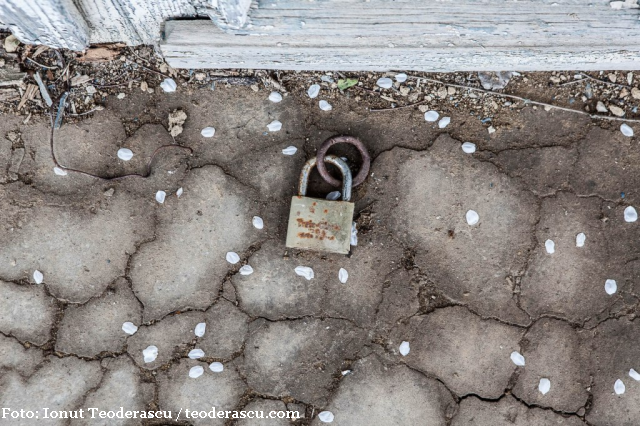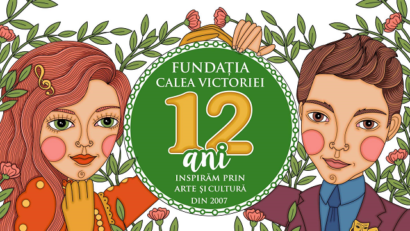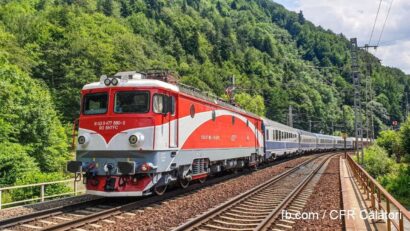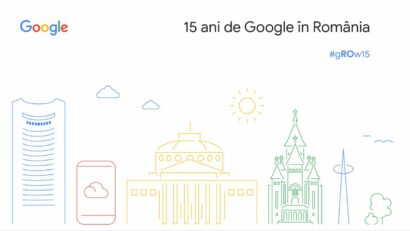Anybody home?
Retrieving a family's past in a remote Romanian village

Ana-Maria Cononovici, 16.02.2021, 14:00
He studied documentary photography in London. Upon his
return to Romania, he was set to rediscover the world he left behind using the
camera, whether he was taking pictures or filming. This is the trigger point for
the Working Site in the time of the pandemic, a project that took off thanks
to the fortnightly lockdown Ionut Teoredascu had been under, in his flat in an
apartment house. Ionut immortalized construction works for the neighboring
block of flats. Then the Pandemic in the countryside followed, it was another
project consisting of snapshots of village life which had remained unchanged,
save for the ear-loop mask people living there had to wear. But what compelled
our attention as regards Ionut Teoderascu was a project for which Ionut
Teoderascu scooped the golden award in the People/Family category as part of
the 2020 Budapest International Photo Awards, titled Nobody’s home.
Ionuţ Teoderascu introduced himself as a documentary photographer.
He told us how the project took off.
Ionut Teoderascu:
The short-reel documentary titled
There’s nobody home was released in April 2019. So it was then that my idea
took shape. I called in at my grandmother’s house. It had been uninhabited in
the last ten years and it was more like a curiosity for me, to take a look
inside. Once I entered the house, I noticed all my grandmother’s stuff was
there, things were almost untouched. It was like a capsule of time. Then I
returned there with my father, since I asked him to tell the story of their childhood,
what parents had been like when they were still alive, since I, for one, did
not meet the grandpa on my father’s side, he died at the age of 44. Then I got
back again, this time with my aunties, I asked them to tell me more and that’s
how I discovered a part of my grandmother’s past and I said to myself the best
thing is to tell the whole story in a documentary short-reel, so that I may
blend the image with the sounds of the house as I made recordings when I went,
with my parents or my aunties, to my grandmother’s house. I made the
documentary short-reel late last year.
The film was received better than he expected. Or at
least that is what Ionut Teoderascu told us.
The first time I launched it in Romania it was part of a Takeover, it was posted on the Instagram page of the magazine titled
It is only a magazine and it was there that I laid out the story for the
first time ever, but it had been released in Great Britain before, it was
posted on a platform dedicated to documentary photography. It was launched
there. With this project, I also participated in a competition before the year
ended; a photo album featuring students was posted there, one of the first
albums Canon has made, and it was there that the project took off, then I
participated in a contest in Budapest where I won the Gold Vibe, the golden
award, with this project. Subsequently it was also posted on other channels,
here, in Romania.
Ionut Teoderascu taking
us through the story of the film.
The sensation you get is that you’re
stepping in another time. As soon as you step into the house, you feel those
images that affect you a lot, emotionally, you see crumbling walls or
spiderwebs, very big. It is that kind of image you wouldn’t want to see,
especially if you have a personal connection to the family who lived there yet
it is an area where the history of a family has been very well-preserved, since
the place we live in, after all defines us and the whole time granny lived
there, she used to live there on a permanent basis for the last 20 years, she
collected all the things she needed, she arranged them, she somehow got ready
for her death as well, she had prepared everything for that already. And you
could see they were still there. I found pills, I found letters granny had kept
there. And all that stuff speaks volumes about the person who used to live there.
The film takes us to the village of Craiesti, Galati
county, the village of the filmmaker’s childhood, where we’re about to visit a
special house.
Ionut Teoderascu:
The house is atypical for that area,
where the houses are sort of smaller, there are two-room houses, but the
granny’s house does have a history of its own. It was purpose-built, it was supposed to house the administration, the
prefecture or the town hall and was afterwards sold to my grandfather. It has
tall doors, the materials are very good, they are made of solid wood and was
built on top of a hill, the view of the village is very picturesque it is old
enough, it is a hundred years old, or sort of.
Ionut Teoderascu once again, this time
extending an invitation to all of us.
I encourage everybody to watch the
documentary short-reel, you can access it on my website, at teoderascu.com
or on YouTube or on the Facebook page as I think this documentary somehow tells
the story of several families, guiding us as to how we should look at a
family’s past, in a bid to get everybody understanding the idea that a family’s
past is here and there and it is romanticized by those who are still alive.
Because we want to know that our parents lived a good life. And, perhaps, that
is exactly why, after they die, we try to reconstruct the past, rendering it
more romanticized. And that’s what I speak about in my documentary short-reel,
apart from the whole story about my grandparents that I tell there.
For those who are interested, in Zalau, the
photographs made by Ionut Teoderascu are brought together in the exhibition
titled the The faces of the pandemic.






























